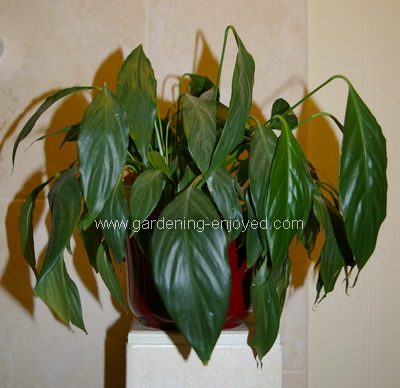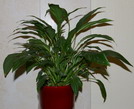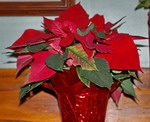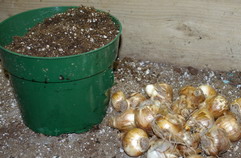|
Houseplants Are Really a MythThere really are no such things as houseplants. Indoor gardening is simply the art and science of convincing a natural outdoor species that it can happily have its needs met in the indoor space where we have chosen to place it. 

There is a wide range of activities that can be loosely gathered together under the topic of Indoor Gardening. Occasionally throwing a bit of water on the wilted and begging Spathiphyllum that landed on your windowsill, after you retrieved it from the 50% off bin at the grocery store, can be as loosely called indoor gardening as can be the hours devoted to nurturing a large windowsill greenhouse that supplies the kitchen with a constant rotation of fresh herbs. We'll try to supply you with the tips and techniques that will make both the
keeping of a few plants
and the fanatical devotion to gardening indoors, an easier and more rewarding experience. Holiday Horticulture
Some of you have received flowering plants as gifts or purchased them to decorate your homes for a holiday season and would like to know how to get the best performance and longest life out of such plants.
Just click here and I will attempt to unravel the poinsettia puzzle
and related conundrums. Flavour Favours
I love to cook, it's a great way to use the vegetables that overflow my summer garden but in the winter the cook's garden becomes relegated to a few indoor herbs. Picking fresh herbs in January is so much more satisfying than shaking out a few dried specks of store bought flavour. This pot of Rosemary does reasonably well on my window all winter and contributes nicely to my grilled lamb chops.
We Have Seen The LightLight is the primary requirement in our indoor gardens. Without sufficient light we can just pack up and move all of the plants outdoors. The cold weather outside will just give them a much quicker and more merciful departure than will the slow painful death that results from insufficient light to drive their natural processes.
The amount and quality of light
that is required for successful indoor gardening varies with the species of plants that we want to grow. Water Water EverywhereIf our indoor gardens have sufficient light then our houseplants will require an
appropriate supply of water.
Just what is appropriate can vary greatly depending on several factors. The type of plant we are trying to grow. The amount of light that is being supplied. The temperature and humidty that prevails in our indoor gardening spaces. Some types of plants such as the various species of
Cactus and other succulents
will actually survive the winter on very infrequent waterings. Part Time Houseplants
Should I move my houseplants outdoors during the warmer months? The short answer is No. There are, however, some plants that should spend the winter indoors and the summer outdoors. We call these
part time houseplants.
These are plants whose primary purpose is to decorate our outdoor living areas and are really just being stored indoors in the winter. Others need to go out to start the flowering cycle or some similar purpose. For those of us who like to continue to Dally in the Dirt during the winter some of our outdoor container plants can be
propagated by cuttings
in order to grow a new crop for planting next spring's garden. Spring Flowers in Winter
The more adventurous of us want to continue to Dally in the Dirt even during the winter. One of the most rewarding and simple ways of heeding that call is to force some spring flowering bulbs. Having little Narcissus blooming in the middle of February certainly seems to shorten the winter.
Just follow me and I'll show you
the easy steps to follow to make this happen in your home. |

